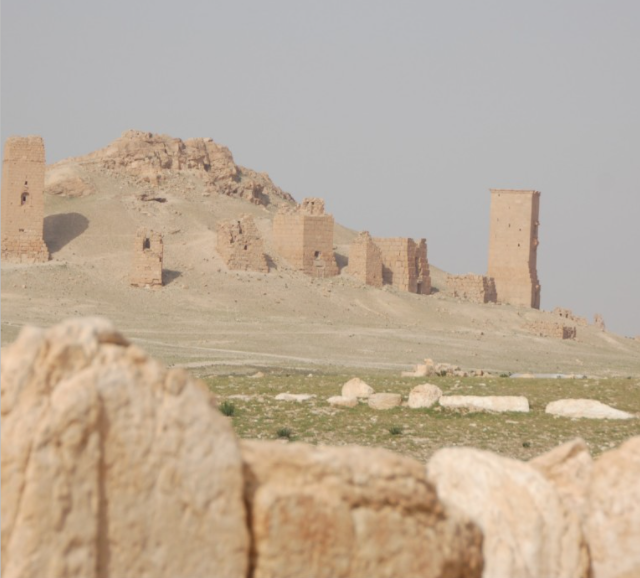Reconstructing the social, economic and demographic trends of Palmyra’s elite from funerary data
New publication by Postdoc Iza Romanowska, Assistant professor Olympia Bobou and Professor Rubina Raja.

For almost 300 years wealthy Palmyrenes commemorated their deceased with portraits set up in elaborate family tombs. In a new paper, published in the Journal of Archaeological Science, the Palmyra Portrait Project reports on how this wealth of information was used to reconstruct the historical trajectories of the city's elite. Through an extensive analysis of over 3500 funerary portraits and other funerary data we were able to recognise periods of intensive portrait production and contrast them with other sources of data on the city's wealth and status as well as the historical timeline of the region.
The results of the analysis demonstrate that broad historical trends in the portraits concur with our understanding of Palmyrene history, but the more detailed patterns highlight the impact of particular historical events over other ones. For example, the periods of intensive warfare in the second and third centuries have left a profound trace in the data. Similarly, the markers of economic and social downtourns of the Antonine and, later, the Cyprian plagues are clearly marked in funerary data. Finally, the 'Golden Age' of Palmyra during the reigns of Odaenathus and Zenobia shows a pronounced decrease in portrait production perhaps highlighting a shift in resource allocation from social displays of prestige, such as funerary portraits to more pressing expenses related to the financing of military campaigns. In general, the funerary data reflects many trends in the continuously changing socio-economic circumstances of the Palmyrene elite.
Although the outline of Palmyra's history is known thanks to written sources, large archaeological datasets can provide a backdrop to historical events by evaluating their impact on the communities involved. Thus combining historical and archaeological data enables us to gain a deeper and more nuanced understanding of the social and economic transitions that past societies underwent over century-long time scales.
”This study demonstrates the immense value of such baseline projects, which leverage the potential of archaeological and art historical data and methods, and can reveal societal and historical processes that have not left traces in written sources.” - comments Prof. Rubina Raja, UrbNet director, head of the Palmyra Portrait Project and one of the publication’s coauthors.
Romanowska, I., Bobou, O. & Raja, R. (2021). 'Reconstructing the social, economic and demographic trends of Palmyra’s elite from funerary data', Journal of Archaeological Science 133: 105432. https://doi.org/10.1016/j.jas.2021.105432
Follow this link for free access: https://authors.elsevier.com/a/1dL-L15SlTrLO-
